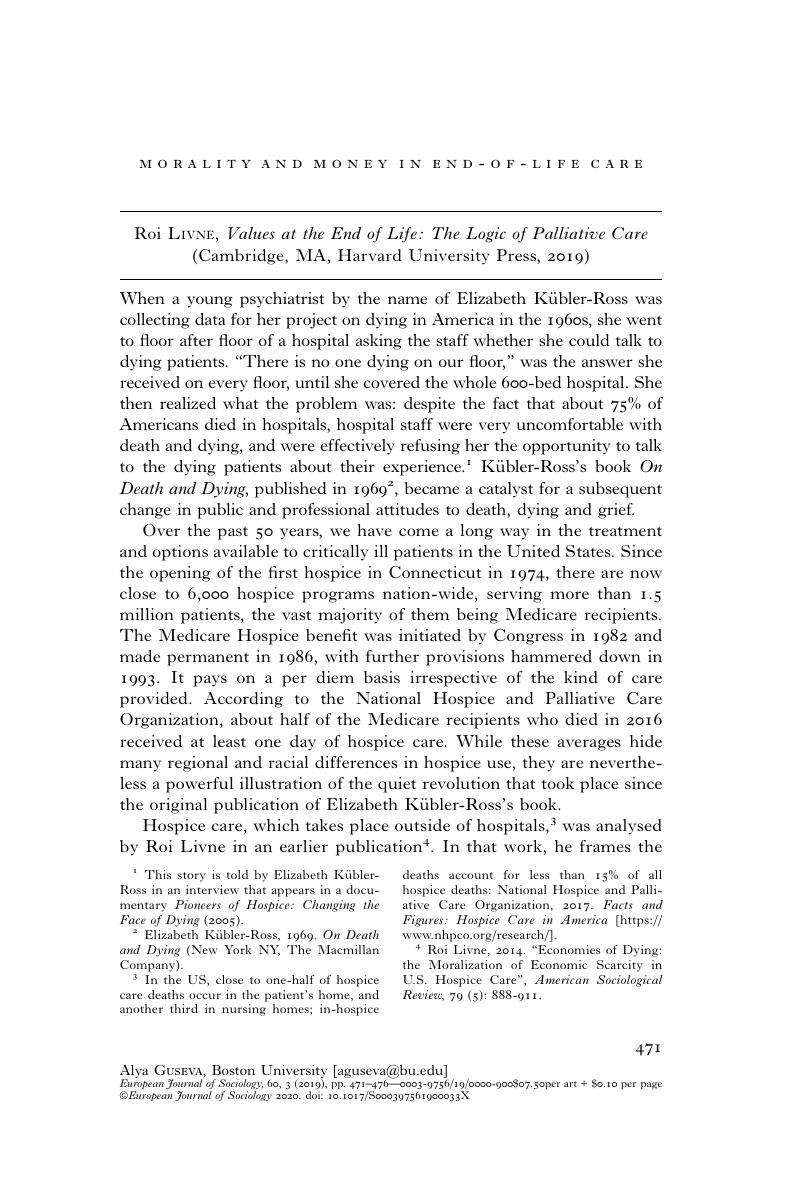No CrossRef data available.
Article contents
Morality and money in end-of-life care - Roi Livne, Values at the End of Life: The Logic of Palliative Care (Cambridge, MA, Harvard University Press, 2019)
Published online by Cambridge University Press: 14 February 2020
Abstract

- Type
- Book Reviews
- Information
- European Journal of Sociology / Archives Européennes de Sociologie , Volume 60 , Issue 3 , December 2019 , pp. 471 - 476
- Copyright
- Copyright © A.E.S. 2020
References
1 This story is told by Elizabeth Kübler-Ross in an interview that appears in a documentary Pioneers of Hospice: Changing the Face of Dying (2005).
2 Elizabeth Kübler-Ross, 1969. On Death and Dying (New York NY, The Macmillan Company).
3 In the US, close to one-half of hospice care deaths occur in the patient’s home, and another third in nursing homes; in-hospice deaths account for less than 15% of all hospice deaths: National Hospice and Palliative Care Organization, 2017. Facts and Figures: Hospice Care in America [https://www.nhpco.org/research/].
4 Roi Livne, 2014. “Economies of Dying: the Moralization of Economic Scarcity in U.S. Hospice Care”, American Sociological Review, 79 (5): 888-911.
5 T. Dumanovsky, R. Augustin, M. Rogers, K. Lettang, D. E. Meier and R. S. Morrison, 2016. “The Growth of Palliative Care in U.S. Hospitals: A Status Report”, Journal of Palliative Medicine, 19 (1), 8-15 [doi:10.1089/jpm.2015.0351].
6 Atul Gawande, 2009. “The Cost Conundrum: What a Texas town can teach us about healthcare”, The New Yorker, May 25 [http://www.newyorker.com/magazine/2009/06/01/the-cost-conundrum]; Dartmouth Atlas Project, 2016. Our Parents, Ourselves: Health Care for an Aging Population [https://www.dartmouthatlas.org/atlases-and-reports/#special_topics].
7 Public hospitals are 7.1 times and private non-profit hospitals are 4.8 times more likely to house a palliative care program than for-profit hospitals [Dumanovsky et al. 2016, op. cit.].


